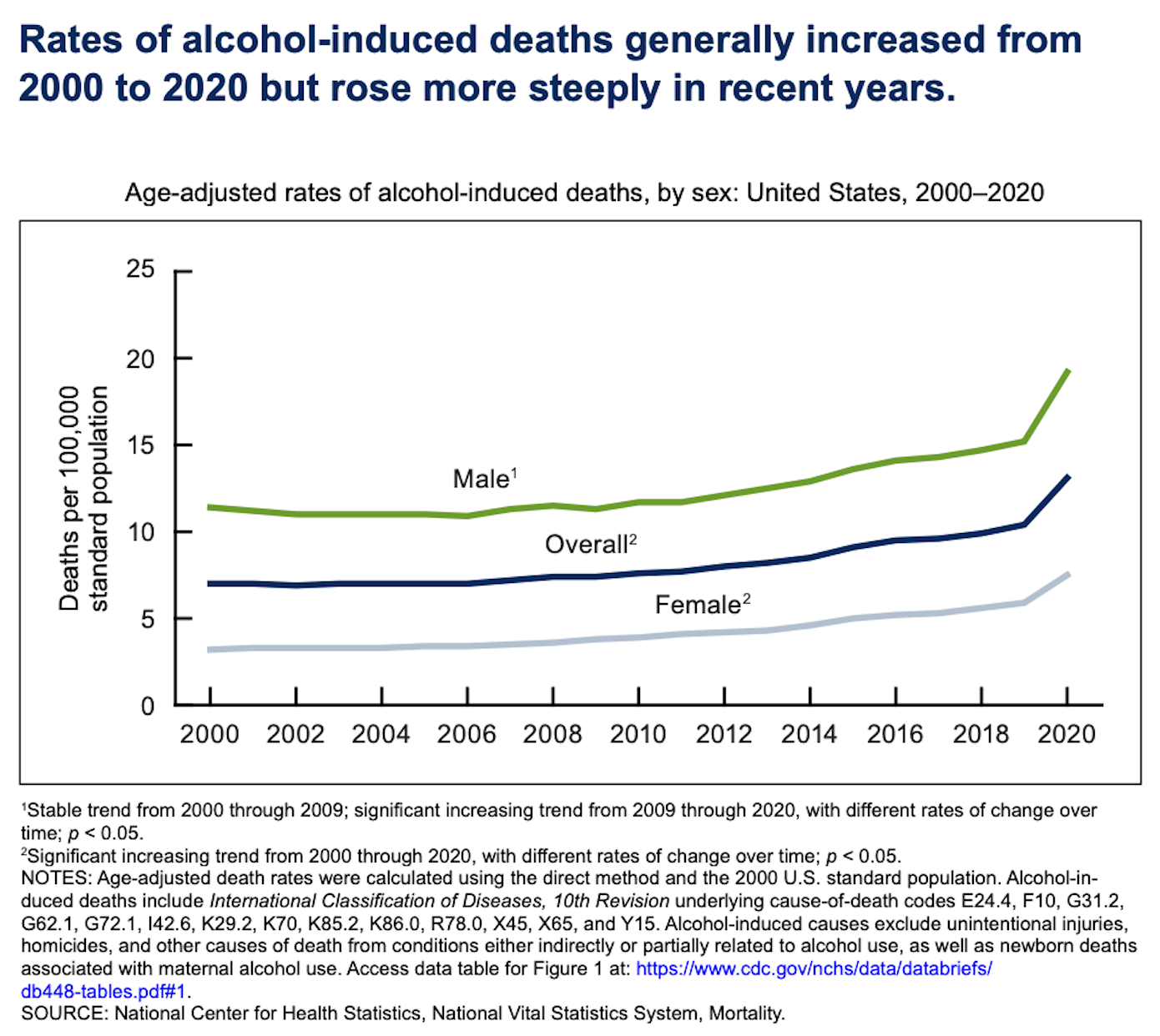Newsletter December 2022
Substance Use Disorder Policy, Strategy and Equity
Dr. Dani Meier, PhD, LMSW, MA
Chief Clinical Officer
Alcohol Deaths Rising: Awareness During the Holidays
With opioid-related overdose deaths—driven overwhelmingly by fentanyl—topping 109,000 Americans in the last 12 months, it’s easy to forget that another dangerous substance is in the refrigerators, wine racks and liquor cabinets of most American households. Alcohol use in the United States increased dramatically in 2019, the first year of the Coronavirus pandemic. This isn’t entirely surprising given COVID-related lockdowns, isolation, loss and trauma, but the CDC recently released a report that alcohol-related deaths (which have been increasing since 2000) also rose steeply since 2019. While there were differences in death rates based on age and gender, death rates for men were 2 to 4 times higher than for women across all age groups.

Alcohol-related illnesses like liver disease are among the variables which contributed to the U.S. losing ground in life expectancy, declining in 2021 to a national average of 76.1 in 2021. American Indian-Alaskan Native people’s life expectancy was the lowest, down to 65.2 in 2021, Black Americans dropped to 70.8, and non-Hispanic whites dropped to 76.4.
Holiday gatherings of friends and family later this month will offer opportunities for laughter and fun, but also for the reemergence of old patterns and conflicts. Moreover, at a time when politics and social issues have divided us more than at any time most of us can remember, dinner conversation can easily get heated. Introducing alcohol—much less a lot of alcohol—into those situations has the capacity to see conflicts escalate quickly. Moreover, aside from the risks associated with holiday revelers driving after drinking, we know that drinking too much is often associated with domestic violence and about 50% of sexual assaults involve alcohol consumption.
The solution in some cases may be to have alcohol-free holiday celebrations (especially if there are people present who are in recovery). Others may choose to limit the amount that is available on hand for consumption. But ultimately no individual can control the alcohol intake of another adult who can legally purchase as much alcohol as they want. What we all can do is be active not silent bystanders. We can look out for each other, our neighbors, friends and family and we can establish a zero-tolerance for behaviors that are aggressive, abusive or violent. With that commitment, we can wish for a peaceful holiday season and a more peaceful year in 2023.
For further information or questions, please contact Dani at Dani.Meier@midstatehealthnetwork.org
